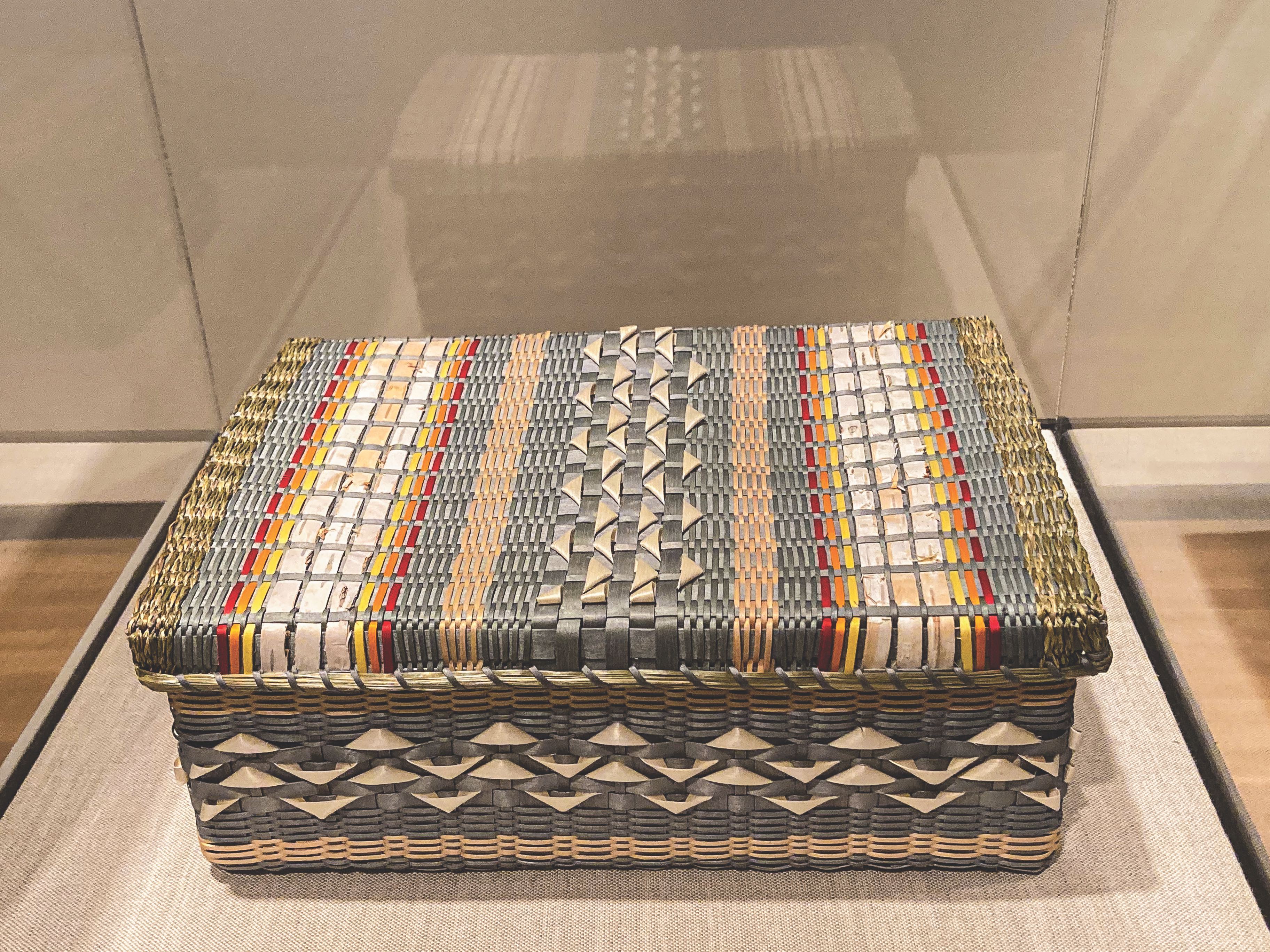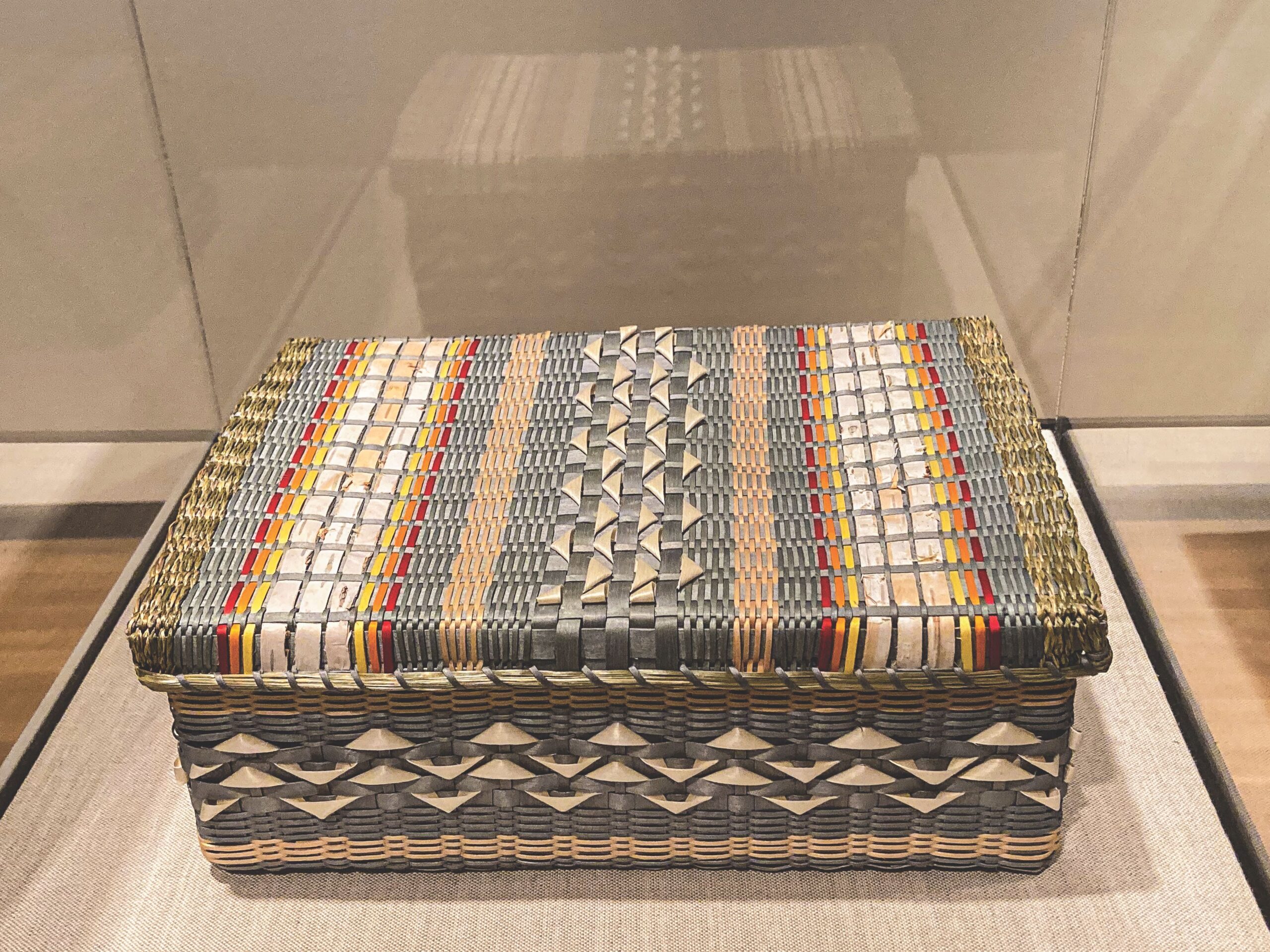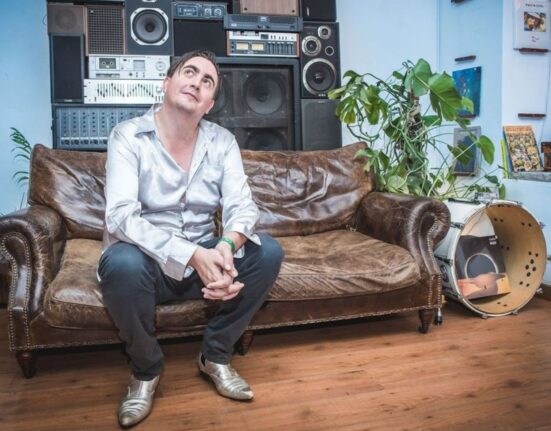 Cora Dow
Cora DowTextiles’ place in the world of Western art has, at times, been tenuous. Woven works that have both a functional purpose and a presence as an art form have historically been devalued in comparison to European painting and sculpture, according to Bowdoin College Museum of Art (BCMA) Curator Casey Braun.
In one of the museum’s newest exhibitions, “Threads: Artists Weave Their Worlds,” Braun places textiles front and center, celebrating their value both as practical objects and works of art and challenging hegemonic narratives of separation between the two.
“A big part of my goal as a curator is to think about historically how and why [these distinctions] were upheld in museums, what types of assumptions were underneath them, and then again, how can we start to question them and right that balance,” Braun said.
Braun hopes that textiles’ presence in everyday life will make the exhibition more approachable for museumgoers while also allowing visitors to reframe their understanding of cloth and woven works as cultural—as well as artistic—objects.
“Textiles are inherently accessible as a medium,” Braun said. “There’s this universality to cloth or to weaving baskets, but also an incredibly rich and diverse array of sort of specific cultural expressions that are very much mediated by the places and time periods in which people were working.”
Indigenous pieces play a prominent role in “Threads,” reflecting the centrality of woven work in Native American artistic traditions as well as in global Indigenous art. Prior to her appointment as Curator of the BCMA, Braun was associate curator of global Indigenous art at the University of Kansas’ Spencer Museum of Art.
Braun said that while the exhibition was not intentionally designed to spotlight these art forms, her curatorial background as well as the breadth of the BCMA’s collection of work from Indigenous artists led to the accentuation of work from Indigenous artists in “Threads.”
“When I came [to Bowdoin] and started going through the process of discovering what was in Bowdoin’s collection … I started noticing that there was this strong thread that focused on Indigenous art,” Braun said.
Braun emphasized that “Threads” intentionally brings different artistic practices and contexts into conversation with one another.
“One of the ways that we can start pushing the boundaries between Indigenous and Western art or art and craft is by placing pieces from those different traditions into dialogue with one another,” Braun said.
“Threads” features Choctaw-Cherokee-American artist Jeffrey Gibson’s mixed media work “The Anthropophagic Effect, Garment no. 3.” Featured in last spring’s BCMA exhibition, “Turn of Phrase,” Gibson’s work draws on a variety of modern textile materials to construct a tunic modeled after those worn by early practitioners of the Ghost Dance, a Native American ceremony that declares resistance against oppression and genocide.
The BCMA also commissioned work by Penobscot basketmaker Theresa Secord for “Threads.” Secord gave an artist’s talk on her own work and the basketmaking tradition last night. As the executive director of the Maine Indian Basketmakers Society (MIBS), Secord has dedicated much of her life to ensuring that the art form lives on.
“It’s just such an inherent part of our ancestry here in Maine as Wabanaki people,” Secord said in an interview with the Orient. “This is something that is really tangible and visible. It’s a really strong cultural expression of who we are, and that’s a good reason to pass it on.”
Secord and the MIBS have found success in their efforts to revitalize the medium. Since the society’s founding in 1993, the average member’s age has lowered from 63 to 40, and the number of basketmakers in the group has increased from 55 to around 150 today.
Secord is renowned for her own basketmaking, with her work on display at institutions like the Portland Museum of Art and the Smithsonian National Museum of the American Indian. Over the course of her 35-year career, she has moved from more traditional baskets to baskets that, while still rooted in Penobscot practice, take on contemporary designs and contemporary ecological issues.
“Pasokos Basket,” Secord’s commissioned piece in “Threads,” is modeled after a sturgeon and is a testament to Secord’s balance of heritage and ecology.
“I wanted to show the ancestral presence of the Penobscots hunting this fish using birch bark torches…. So, this basket really commemorates the return of the Atlantic sturgeon to the Penobscot river,” Secord said during her lecture.
“Threads” opened last month in the Shaw Ruddock Gallery on the BCMA’s upper level alongside “Currents: Art Since 1875,”which adjoins it in the Boyd Gallery. Both exhibitions highlight modern and contemporary art: Braun said that “Currents” is intended as a semi-permanent installation of the BCMA’s collection of contemporary art, whereas exhibitions in the adjoining gallery—the first of which is “Threads”—will focus on specific aspects of contemporary art in conversation with the art and themes explored in “Currents.”
“This is the first iteration of that new configuration and rethinking of the upstairs museum galleries where [the Boyd and Shaw Ruddock galleries] really are dedicated to late-19th, 20th and 21st century works of art,” Braun said.
While “Threads” is scheduled to run until October 2024, Braun said that some pieces in the exhibition will be swapped with other works in the spring to give less durable works a reprieve.
“You can look forward to works of art that will be on view for the second half of the exhibition’s run,” she said. “I hope that those will spark new conversations.”







